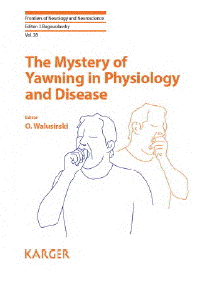 -
- More than a century ago, Darwin (1872)
suggested that the "expression of the emotions"
of animals could be understood by assuming a
causal connection between such expressions and
underlying motivational and physiological
states. He stressed repeatedly that expressions
need have no original or derived signal
functions. Intervening research supports many of
this basic theses, though we now appreciate that
"expression of emotions" through postures,
movements and facial appearance often has
communicative importance and hence may reflect
the operation of natural selection favouring
information transfer.
-
- Such appears to be true at least for many
primate species, though good evidence is sparse
for other taxa of mammals. Nevertheless,
circumstancial complexitty and permanence of
social organisation of a species and the
diversity and degree of stereotypy of facial
expressions used in social contexts by members
of that species.
-
- Vibrissae and facial expressions of
pacific walruses, Odobenus rosmarus
(Linnaeus) and New Zealand fur seals,
Artocephalus forsteri (Lesson) and the contexts
in which facial expressions occur, are described
and compared here. Both species are gregarious,
the walrus exceptionnaly so, but their
gregariousness reflects adaptation to different
ecological problems. That of walruses is
probably related largely to the need for energy
conservation in the cold enironment they inhabit
and probably also mutually beneficial effects of
group integrity on locating and maintaining
contact with favourable food and ice conditions.
Fur seals are gregarious in purposes of breeding
and raising the young. Whereas fur seals show
few or no anatomical modifications related
directly to intraspecific visual signalling,
walruses have ther upper canines hypertrophied
for that function.
-
- Vibrissae [...]
- Autogrooming and yawning
-
- A. fosteri
- During scratching of the facial region and
upper throat, A fosteri often slightly erect the
vibrissae and close the eyes partially or
entirely. Yawning is often terminated with
erection of the vibrissae.
-
- O Rosmarus
- Walruses scratching their forquarters or
head may have the eyes partially closed and
usually show some degree of erectionof the
vibrissae and their movement dorsally, but not
dorsomedially.
- Walruse sometimes yawn after social
encounters in which they showed submissvie
behaviour, but most yawning appears simply to be
"primed" by preceding submissive behaviour and
to have no social function. In yawning, the
mystacial pads drawn up dorsally and the mouth
is opened widely from the dorsal aspect, yawning
imparts a facial expresion similar to, though
broader than, a submisive one.
-
-
-
-
-
-
|



